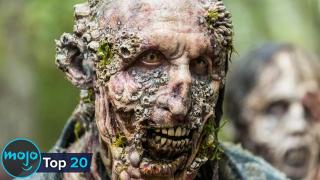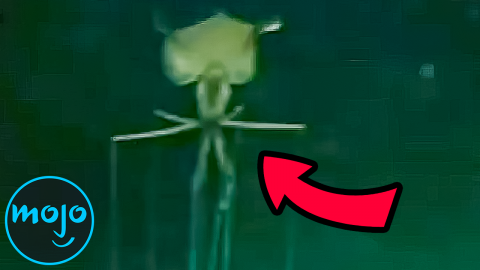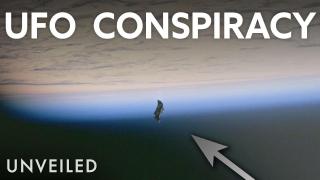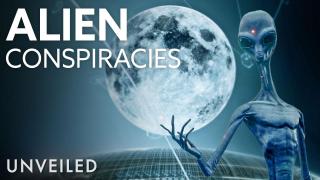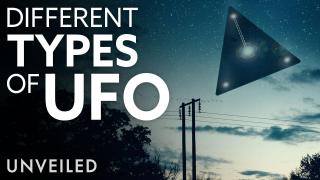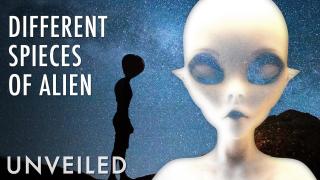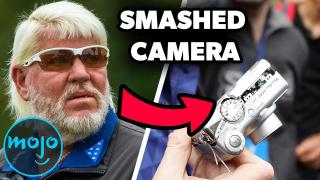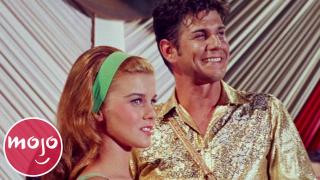Top 20 Zombie Types
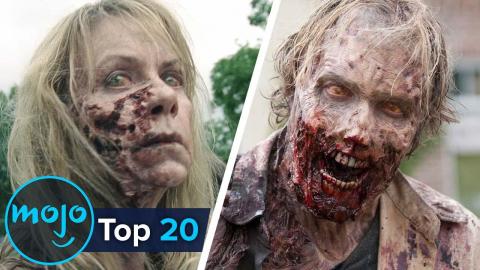
#20: Re-Animator Zombies
Top 20 Zombie Apocalypse Survival Tips
“Re-Animator” franchise (1985-2003) The key to the coolness of these zombies lies not specifically with the reanimated bodies themselves, but rather the glowing green goo that makes them tick. This “re-animator serum” is the calling card of the franchise, devised by the brilliant but obsessed med student Herbert West. Jeffrey Combs creates a performance for the ages as West, while director Stuart Gordon and crew adapted an H. P. Lovecraft tale with a fantastic balance of morbid humor and legit gross-out set pieces. You’ll never look at a disembodied head quite the same way after you watch “Re-Animator.” Trust us.
#19: Underwater Nazi Zombies
Top 10 Creepiest Things Caught on Underwater Cameras
“Shock Waves” (1977) Hey, kids, did you know that it wasn’t “Dead Snow” that first popularized the Nazi zombie subgenre? Nope, there were actually a number of cult films from the ‘80s that also contained this very specific and niche type of the undead. “Zombie Lake” from 1981 is one infamous example, while 1977’s “Shock Waves” served as something of a primer for the genre. The zombies here benefit from cool minimalist makeup and atmospheric underwater photography, behaving as an unsettling, slow-moving menaces. “Shock Waves” is more of a measured burn than an all-out action fest, but the zombies here still make one heck of an impression.
#18: The Swarm
Different Types Of UFO Conspiracy You Should Know About | Unveiled
“World War Z” (2013) The infected antagonists from the film adaptation of Max Brooks’s “World War Z” differ from the source material in that they’re not the traditional, slow-moving zombies of old. In addition to this, they also possess another unique characteristic: the ability to collaborate. The Swarm takes form when the zombies create a wall or mountain of the dead, and use this to ascend high structures or obstacles in their path. It’s a truly harrowing sight to see this adaptation in practice, with the end results looking like something out of a savage nature film. Only instead of a colony of ants…it’s a colony of the infected dead.
#17: DC2 Zombies
The Different Types Of Alien Conspiracy You Should Know About | Unveiled
“Planet Terror” (2007) The DC2 gas creates a town full of angry and brutal zombies in Robert Rodriguez’s homage to grindhouse cinema, “Planet Terror.” The movie is chock-full of knowing nods to the wild horror and exploitation classics of old, complete with faux film damage and plenty of zombie carnage. The DC2 zombies are menacing and seem to attack with an intense ferocity, with the stunt actors going all in with the film’s crazy concept. As a result, “Planet Terror” feels like a relatively authentic and good-intentioned mixture of gross-out gags and “don’t take it too seriously” storytelling.
#16: Audio Variant Walkers
Top 10 Audio with Disturbing Background Stories
“Pontypool” (2008) It can be difficult to do something new with the zombie genre. So much has already been said with both the movies and the undead creatures themselves that, when a unique deviation does show up, it deserves serious attention. Enter 2008’s “Pontypool,” which presented its zombies as things that could be created via certain words in the English language. The idea of spreading a virus through sound was unique, and executed well by director Bruce McDonald, despite his assertion that the creatures here aren’t technically zombies. Regardless, these “conversationalists” get a nod from us as being one of the best examples of thinking outside the box when it comes to zombie flicks.
#15: Self-Referential Zombies
The Different Types Of UFO You Should Know About | Unveiled
“Shaun of the Dead” (2004) They say that every genre can only go one way after reaching peak popularity: self-parody. This doesn’t have to be a bad thing, however, as evidenced by Edgar Wright’s loving tribute to zombie cinema, 2004’s “Shaun of the Dead.” While the zombies depicted do resemble the classic, slow, lumbering ghouls, they do have a keen propensity for sharp comedic timing. That said, they can also be utilized for dramatic effect, such as when Shaun’s mum turns late in the proceedings. In addition, there are also moments of legit gut-munching grossness, such as the demise of David at the Winchester pub. It all works.
#14: Ninja Zombies
“Zombieland: Double Tap” (2019) The “Zombieland” franchise packs a whole lot of variety into its undead antagonists. From the mad zombie disease in the first film to the T-800s and ninja zombies from the sequel, there’s no denying the lengths the films took to try and present something new to its audience. The ninja zombies in particular play into the sequel’s even smarmier sense of self-awareness. “Double Tap” knows you’re watching a movie, and it also knows what you want: new thrills. Thus, the ninja zombies, silent and deadly assassins, provide yet another humorous curveball in a film that delights in…well, laughing along with its audience.
#13: Alpha Zombies
12 Upcoming Space Missions From the Moon to Alpha Centauri | Unveiled
“Army of the Dead” (2021) Love it or hate it, Zack Snyder’s “Army of the Dead” is another film that tries to tweak genre conventions with its introduction of the Alpha zombies. The concept of developing intelligence within the undead community wasn’t anything new in 2021, but the Alphas take it multiple steps further via the introduction of planning, problem solving, cooperation…and even procreation. This is made slightly more believable since the “Army of the Dead” zombies are the infected kind, rather than the out-of-the-ground variety. Their existence and culture may require the audience to suspend disbelief, but the Alphas certainly make for interesting viewing as a new step in zombie evolution.
#12: Romantic Zombies
Top 10 Most Romantic Destinations in the World (2019)
“Warm Bodies” (2013) If the romantic zom-com “My Boyfriend’s Back” walked in 1993, that was only so “Warm Bodies” could run in 2013. Both films take the idea of love conquering death and transposing it to a supernatural horror setting, with the latter even being narrated by the lead zombie. It should be said that the makeup in “Warm Bodies” tones things down to the point that Nicholas Hoult’s R is still relatively human-looking, leaning into the film’s fantastical love story. If you’re looking for a cool entry point to delve into the world of zombies, you could certainly do worse than “Warm Bodies.”
#11: Dancing Zombies
“Michael Jackson’s Thriller” (1983) While most of our entries stem from movies, there was simply no way we weren’t going to allow these iconic undead dancers a spot on our list. It’s difficult to describe to those who weren’t there what the impact of “Michael Jackson’s Thriller” was when it first aired in 1983. The King of Pop and the world of horror cinema beforehand seemed incongruous, but it ultimately fit like a glove. Heck, flash mobs to this day emulate the “Thriller” dance performed by MJ and his zombie crew, and why shouldn’t they? The makeup is on point, the atmosphere is incredible and the end results are simply iconic.
#10: T-Virus Zombies
The Different Types Of Alien You Should Know About | Unveiled
“Resident Evil” franchise (2002-) Based on the Japanese video game series, the film series features a wealth of “Resident Evil” lore at this point - but we’re just so impressed with the story of how it all started: the Tyrant Virus. More commonly known as the T-Virus, it was developed by the Umbrella Corporation as a bio-weapon. Those infected with it can take a variety of shapes, but their commonality is the unrelenting urge to consume flesh. Carriers of the T-Virus can be fast or slow, utterly beastly or more human, but one thing’s for sure: they’re a very important aspect of the modern zombie mythos.
#9: Intelligent Zombies
Another Top 10 Intelligent Animals
“Land of the Dead” (2005) We touched upon the idea of intelligent zombies earlier with “Army of the Dead,” but it’s important to note that George A. Romero was already pioneering this zombie evolution back in the mid-eighties with “Day of the Dead.” The ideas from that third entry in his “Living Dead” series were expanded upon even further with 2005’s “Land of the Dead,” which took its zombies and gave them even more humanity and ingenuity. This is seen primarily with the character Big Daddy, who not only seems to be in touch with human emotions and memories, but is even able to use tools and mobilize his fellow zombies into an urban attack. This all gives the undead an even more interesting layer of character and pathos.
#8: Train Zombies
Top 10 Most Iconic Train Rides
“Train to Busan” (2016) Horror cinema has consistently served as fertile ground for social commentary, but more and more often the genre seems to be taking this opportunity and running with it in unique and interesting ways. “Train to Busan” is one of those films, containing the fast and agile zombies á la “World War Z,” while at the same time touching on class and societal structure. It takes a deft hand to maintain the delicate balance of scares, action and character development, but “Train to Busan” and its zombies work alongside its human protagonists to create undead cinema brilliance.
#7: Fast Zombies
Top 30 Craziest Fast Food Menu Items of the Century (So Far)
“Dawn of the Dead” (2004) “Nightmare City” director Umberto Lenzi certified that his antagonists were infected people and not zombies. Still, the film’s U.S. title “City of the Walking Dead” didn’t help this clarification, and for years “Nightmare City” was seen as a precursor for “fast zombies.” Fast-forward to 2004, however, and Zack Snyder’s remake of “Dawn of the Dead” put the debate front and center. If these people are dead, why are they running? Why are they moving so fast if they’re in various states of decay? Ultimately, none of these questions mattered, because the zombies in “Dawn of the Dead” work so well that horror fans have begrudgingly accepted that fast zombies are here to stay.
#6: Italian Zombies
Top 10 Italian Destinations in 2021
“Zombi 2” (1979) What’s “Zombi 2” a sequel to, you may ask? George A. Romero’s “Dawn of the Dead.” Well, the Italian version of it, anyway, which was indeed called “Zombi.” Actually, it doesn’t matter if you know it as “Zombi 2” or “Zombie Flesh Eaters,” this masterpiece from director Lucio Fulci possessed some of the grossest, worm-laden practical effects seen during its day, with the zombies truly coming across as rotting, shambling automatons of death. Furthermore, “Zombi 2” also contained one infamous scene that actually managed to cross over into mainstream pop culture…the epic battle between a zombie and a shark! You won’t see anything like that stateside - at least at the time.
#5: Rage Zombies
Top 10 Times Golfers Rage Quit
“28 Days Later” franchise (2002-07) Are the rage zombies from the “28 Days Later” franchise technically deceased? No. They’re the victims of an extremely contagious virus, but there’s no denying the massive impact they made back when the first film was released in 2002. Danny Boyle’s excellent direction and Alex Garland’s smart script work alongside the desolate cityscapes and dramatic character moments to make the OG “28 Days Later” a certified classic. Meanwhile, the rage zombies themselves are truly terrifying with how quickly they move and how aggressive they are when they attack. The results are frightening and sudden, with all the fierceness of a wild animal attack. It’s unpredictable and totally effective.
#4: Walkers
“The Walking Dead” (2010-) They may not ever be referred to as actual zombies, but that doesn’t really matter, does it? “The Walking Dead” remains a certified cultural phenomenon, boasting the original comics, a hit AMC series and expanded universe spinoffs. It’s a world that’s captured the imaginations of millions, and this is thanks largely to how much ingenuity the creators put into their zombies…er, walkers. Special effects wizard Greg Nicotero and his team have put in so much effort, not only into the varied appearances of the walkers, but also their behavior. It truly is a walker world, and we just live in it.
#3: Brain-Eating Zombies
Headless Humans: Does Your Brain Need Your Body? | Unveiled
“Return of the Living Dead” franchise (1985-2005) Zombies don’t usually eat brains, but if they do, you have “The Return of the Living Dead” to thank. This horror classic, written and directed by Dan O’Bannon, is perhaps the most singularly unique movie on this list, with a punk rock aesthetic and more. The zombies from the franchise aren’t above calling for more paramedics or cops to munch on, and seem to be particularly focused on the gray matter. Their reasoning is even communicated to our protagonists by the torso of one female zombie, who explains that eating brains makes the pain of being dead go away…at least momentarily.
#2: Voodoo Zombies
“White Zombie” (1932) The classic zombie is usually depicted as an undead creature, but perhaps we should look to another school of thought for a different scare. The zombies of Haitian folklore are often resurrected via magical or occult means, under the control of a sorcerer. This mythology is tied deeply into Haiti’s occupation by the United States beginning in 1915, as well as the history of slavery on the island. Voodoo zombies have been brought to the screen multiple times, from the 1932 classic “White Zombie” to 1974’s “Sugar Hill” and even director Wes Craven’s underrated gem from 1988, “The Serpent and the Rainbow.” Each time, they remind us that sometimes a hollow, empty stare can frighten us just as much as extravagant special effects.
#1: Classic Romero Zombies
Top 10 Classic Musicals That Have Aged Especially Poorly
“Night of the Living Dead” franchise (1968-) George A. Romero was an accomplished filmmaker who contributed much more than just zombies. In fact, some of his best films have nothing to do with the undead. Still, his vision nevertheless was an absolute game changer for the horror genre. The original “Night of the Living Dead” broke free from horror’s occasionally cheesy, monster matinee past with zombies that devoured human victims on-screen in sickening detail. Romero’s films have been studied as commentaries on race and consumerism, all the while still working on a commercial level. The antagonists range from pale-skinned mall walkers to military men who stand and salute, but they’re essentially all cornerstones of the zombie archetype.


